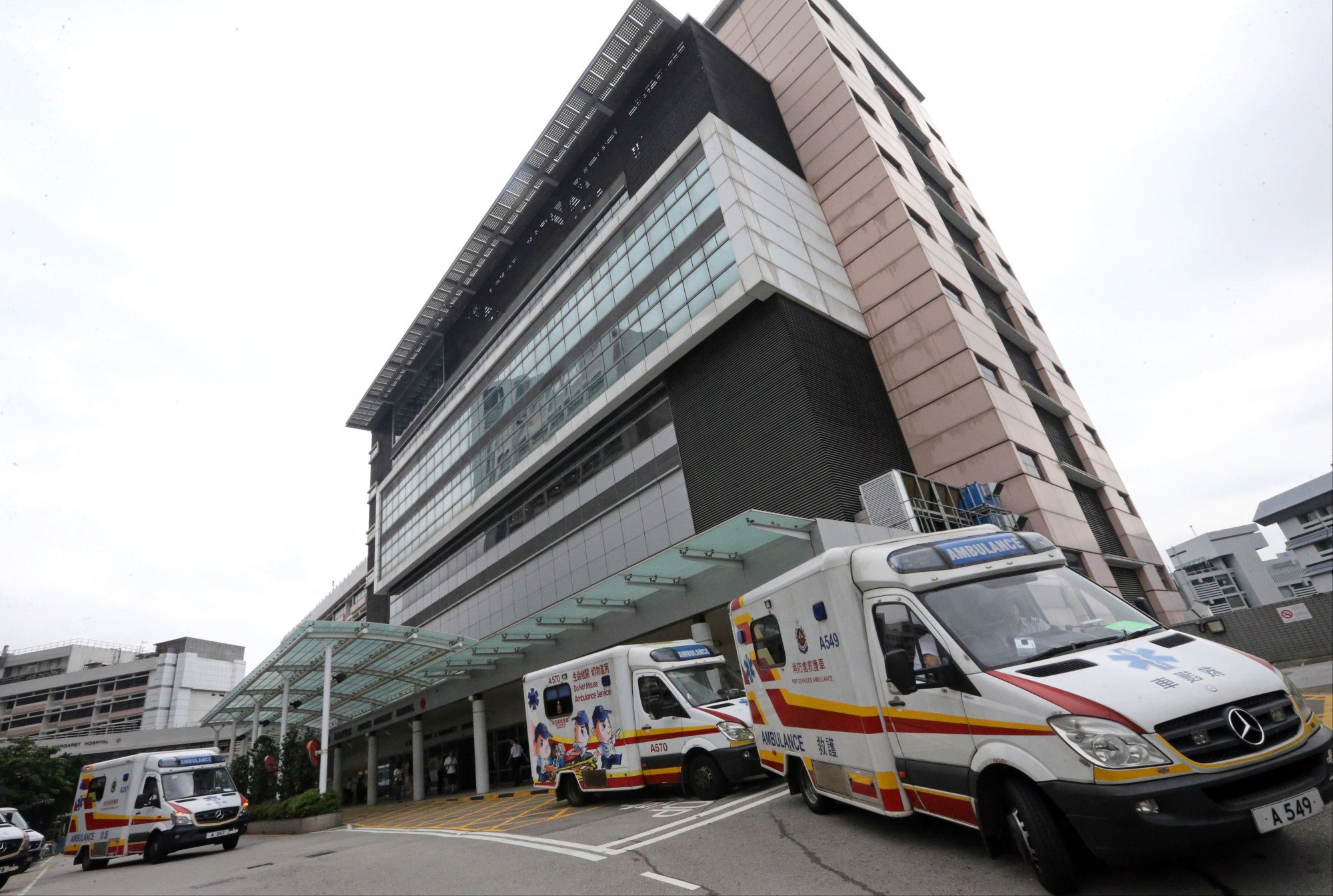
Explainer | Hepatitis C case at Hong Kong public hospital triggers health probe. So what are the risks?
- Princess Margaret Hospital says man, 24, became infected after staying in same ward cubicle as 52-year-old hepatitis C carrier between April and May
Princess Margaret Hospital in Kwai Chung said on Thursday that a 24-year-old man had become infected after staying in the same ward cubicle as a 52-year-old hepatitis C carrier between April and May.
Tests showed a link between the pair as both patients were infected with hepatitis C with an identical genetic sequence.
The Post takes a look at how such incidents can happen, the disease itself and how you can avoid getting infected.
1. What is hepatitis C?
Hepatitis C is a viral infection that affects the liver. It can cause acute and chronic illnesses, and can be life-threatening.
The infection is spread through contact with infected blood, including through sharing needles or syringes, or from unsafe medical procedures such as blood transfusions with unscreened blood products.
Symptoms can include fever, fatigue, loss of appetite, nausea, vomiting, abdominal pain, dark urine and yellowing of the skin and eyes.
Acute hepatitis C infections are usually asymptomatic and most do not lead to life-threatening diseases.
About 30 per cent of infected people spontaneously clear the virus within six months of infection without any treatment, while the remaining 70 per cent can develop chronic hepatitis, which may lead to cirrhosis and liver cancer.
Globally, an estimated 50 million people have chronic hepatitis, with about 1 million new infections per year, according to the World Health Organization (WHO).
The Population Health Survey 2020-22 showed about 17,000 people had hepatitis C in Hong Kong.
2. What happened at Princess Margaret Hospital?
The hospital said the 24-year-old man was first admitted there to be treated for a head injury on March 21, before being transferred to a high-dependency unit in the neurosurgery department on April 11.
He tested negative for hepatitis C in mid-April, but got a positive reading on June 15 after he showed signs of elevated liver enzymes.
A contact tracing investigation done by the hospital has identified 16 patients staying in the same cubicle over the same period of time, including the 24-year-old and a patient who had died due to an underlying disease.

3. How was the disease transmitted?
The hospital said the 24-year-old patient and the 52-year-old hepatitis C carrier required frequent use of invasive catheters, blood tests and intravenous injections, with both also undergoing wound care procedures during their hospital stay.
All these procedures could increase the risk of infection, it said.
Dr Teresa Wang Kin-fong, a specialist in clinical microbiology and infection, said a common transmission route for hepatitis C, a blood-borne disease, in hospitals was through needlestick injuries, where the skin of a patient was accidentally punctured by a used, contaminated needle.
Wang added that the infection rate for that route was about 0.3 per cent.
She said all hospitals had a reporting mechanism for hepatitis C cases that were handled by infectious diseases teams, while patients with needlestick injuries would undergo blood tests to help screen for the disease and prevent further transmission.
But she said that more could be done at hospitals, such as improving staff training on transmission prevention.
Wang also called for enhanced screening of the disease, especially among patients who required a higher level of care and were incapable of telling staff about becoming infected.
Loey Mak Lung-yi, a clinical assistant professor at the University of Hong Kong’s department of medicine, said hospitals had a set of standard precautions to prevent transmission of the infection, including requiring personnel to properly dispose of used needles and to always wear fresh gloves before treating each patient.
Those at higher risk of hepatitis C infection, including people with a history of needle sharing and men who have sex with men, were also tested regularly, she said, although regular screening was not arranged for all patients given the city’s low prevalence rate of about 0.3 per cent.
“If all the standard precautions are taken sufficiently, there should not be any hepatitis C transmission in hospital,” she said, adding that she had not seen any major loopholes in the current procedures.

4. How can I avoid getting hepatitis C?
There is no vaccine for hepatitis C, but it can be treated with antiviral medication.
Early detection and treatment can help prevent serious liver damage and improve long-term health.
According to the WHO, the best way to prevent the disease is to avoid contact with the virus.
It said extra care should be used in healthcare settings, and for people with a higher risk of hepatitis C virus infection, including those who inject drugs, men who have sex with men, and those living with HIV.
Effective measures include appropriate use of healthcare injections, safe handling and disposal of needles and medical waste, as well as training of health personnel.
Testing of donated blood for the hepatitis C virus and other viruses is needed, while practising safe sex using condoms is also suggested.
The Viral Hepatitis Control Office under Hong Kong’s Department of Health also urged people to avoid sharing personal care items such as razors and toothbrushes, and also needles, syringes or other equipment that can be potentially contaminated with blood.
Infection specialist Wang said a key step in curbing hepatitis C transmission in hospitals was reducing patients’ exposure to contaminated blood, such as that found in the vomit of virus carriers, or their used medical gauze and needles.
She urged patients to avoid contaminated materials and equipment, and to also tell medical staff immediately if they had any needlestick injuries or cuts.

5. What about similar past cases?
Diseases, ranging from superbugs to respiratory infections, have the potential to easily spread in a hospital environment, especially crowded ones, even if infection control measures are in place.
A cluster of Methicillin-resistant Staphylococcus aureus (MRSA) was revealed earlier this year at Kwong Wah Hospital’s neonatal intensive care unit.
Two babies, a girl and a boy both aged 35 days, were identified as carriers of the superbug in January, before two other infants at the same ward were also found to have it.
Another three infants were later discovered to have also contracted MRSA.
A ward for female patients with learning disabilities in Kwai Chung Hospital also reported a cluster of cases involving parainfluenza virus type 3 in January, that initially comprised four patients.
Another patient in the ward was later found to be infected with the disease.

